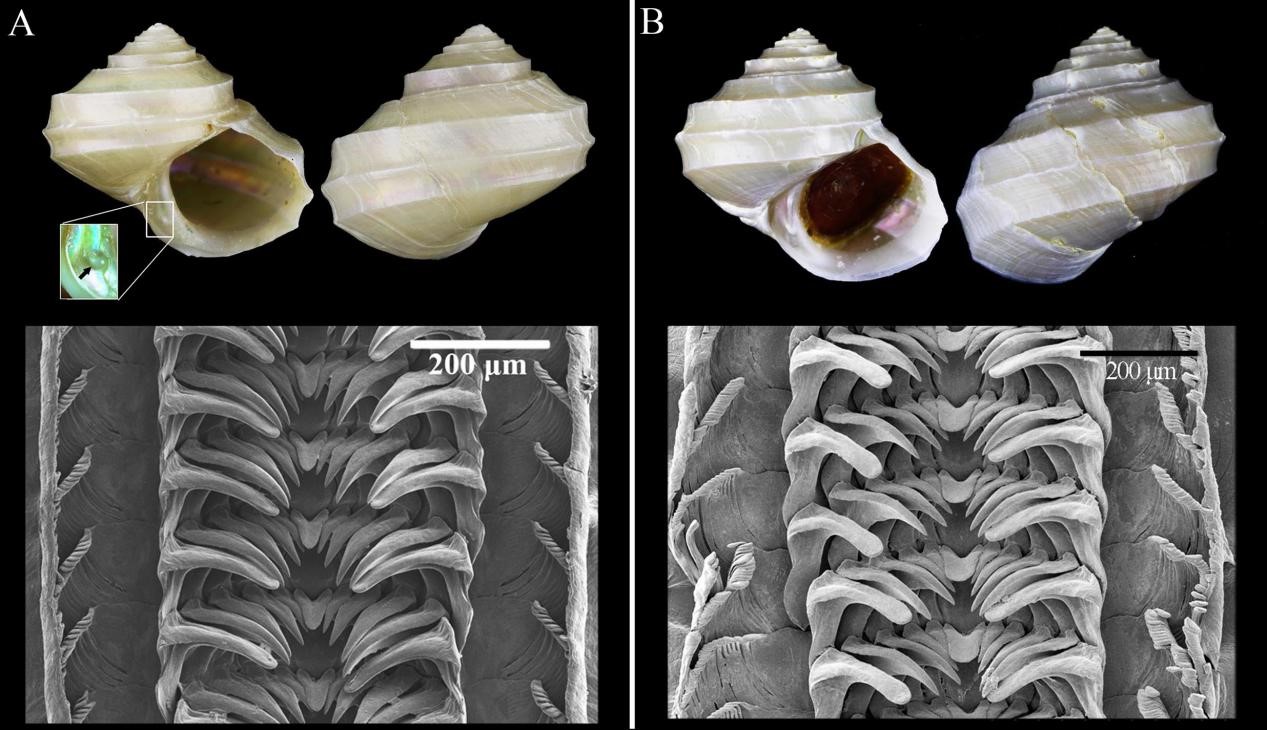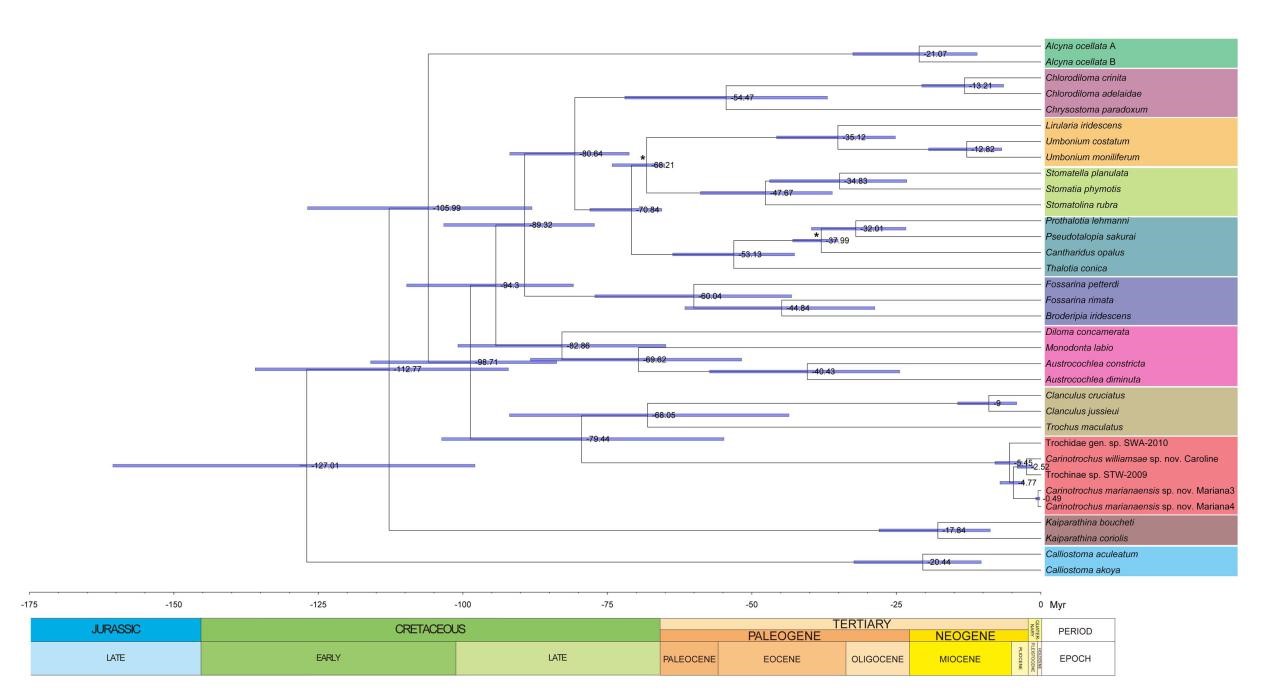The family Trochidae is the largest trochoid group in terms of numbers of genera and species, with over 1000 species and nearly 100 genera in 10 recognized subfamilies. In recent decades, the fauna of this family has received extensive taxonomic attention in the western Pacific region. However, these studies were mainly focused on or near continental shelf/slope, with the fauna from oceanic regions, such as seamounts, being poorly explored.
Prof. ZHANG from IOCAS recently discovered two new trochid species from seamounts in the tropical western Pacific. They described these species as new to science and published their findings on the journal of Deep-Sea Research Part I.
The two species were collected from the upper bathyal zone by the ROV FAXIAN (IOCAS; mother ship R/V KEXUE) during expeditions to two seamounts near the Mariana Trench. The integrated taxonomic approach incorporating morphological, anatomical, and molecular analyses was used to identify these two species and assign them to appropriate higher taxa. The phylogenetic relationships between the new taxa with their related species were reconstructed based on the mitochondrial COI, 16S rRNA, and nuclear 28S rRNA genes. These studies revealed that the two species are new to science and represent a new genus that belongs to the family Trochidae. However, the new genus does not fit well with any existing subfamily. A new subfamily, Carinotrochinae Zhang, Zhang & Zhang, 2020, and a new genus, Carinotrochus Zhang, Zhang & Zhang, 2020, were proposed to accommodate these two species. Carinotrochus marianaensis Zhang, Zhang & Zhang, 2020, the type species, was associated with coral debris at a depth of 865 m, and Carinotrochus williamsae Zhang, Zhang & Zhang, 2020, was discovered crawling on a hydroid Stegolaria sp. that was attached to a dead bamboo coral at a depth of 1332 m. Molecular data also revealed that other two undescribed species, reported from Vanuatu and New Caledonia respectively, should also be included in this genus.
The result of the molecular clock analysis indicated that Carinotrochinae subfam. nov. split from its shallow-water sister subfamily Trochinae roughly 80 Mya during the Late Cretaceous. It is reasonable to conclude that the complex and robust bottom currents and mesoscale flow dynamics play a crucial role in dispersal and speciation of Carinotrochus species, such as Antarctic Intermediate Water (AAIW), Upper Circumpolar Deep Water (UCDW), and Lower Circumpolar Deep Water (LCDW).
This work was supported by the Strategic Priority Research Program of the Chinese Academy of Sciences, Science & Technology Basic Resources Investigation Program of China, and the Special Funds for the Young Scholars of Taxonomy of the Chinese Academy of Sciences.

Carinotrochus williamsae sp. nov. in situ crawling on hydroid Stegolaria sp.

Shells and radulae of Carinotrochus marianaensis (A) and Carinotrochus williamsae (B)

Chronogram with divergence time estimates among family Trochidae from the concatenated genes
|
|

Address: 7 Nanhai Road, Qingdao, Shandong 266071, China
Tel: 86-532-82898902 Fax: 86-532-82898612 E-mail: iocas@qdio.ac.cn


